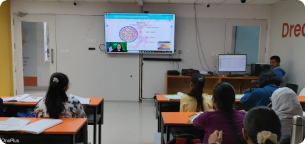NCERT Class 10 Maths Chapter 11: Complete Resource for Areas Related to Circles






NCERT Solutions for Class 10 Maths Chapter 11 Areas Related To Circles
FAQs on NCERT Solutions for Class 10 Maths Chapter 11 Areas Related To Circles
1. What are the topics included in the CBSE prescribed NCERT book of Class 10 Maths Chapter 11?
The topics included in the CBSE prescribed NCERT book of Class 10 Maths Chapter 11:
Introduction
Perimeter and Area of a Circle
Sector of a Circle
Segment of a Circle
Combinations of Circles and Their Parts
2. What is the advantage of using Vedantu NCERT Solutions for Class 10 Maths Areas Related to Circles?
Class 10 Board exams are a crucial part of your future, the preparation would be next to perfection with guidance from subject experts. Vedantu's reference materials satisfy all the needs of a student who is determined to excel in their exams. The solutions provided in the notes are accurate and involve various techniques that help students.
3. What are the important formulae used in this chapter?
The important formulae used in the chapter are:
Circumference of a circle = 2 π r.
Area of a circle = π r
Length of an arc of a sector of a circle with radius r and angle with degree measure θ is= theta/360 *2*π *r
Area of a sector of a circle with radius r and angle with degree measure θ is theta/360 *π*r2
Area of a segment of a circle = Area of the corresponding sector – Area of the corresponding triangle.
4. How many exercises are there in Chapter 11 of Class 10 Maths?
There is only one exercise in Chapter 11 Areas Related to Circles of Class 10 Maths. Exercise 11.1 has fourteen questions. You can get answers to the textbook questions on Vedantu. On this website, you will find the NCERT Solutions of Chapter 11, that is, Areas Related To Circles written in simple language. You can also access the study material on the Vedantu app. All the resources are available free of cost.
5. How can I prepare Chapter 11 of Class 10 Maths?
To get well-versed with Chapter 11 - Areas Related to Circles, you are required to attend the lectures related to this chapter at your school. While understanding the concepts of the chapter or solving questions, if you face any doubts then ask for help from your subject teacher. Additionally, you should practice this chapter at your home. Making a separate notebook for important formulas will help you to revise the entire chapter within a short period of time.
6. What is the area of a circle according to Chapter 11 of Class 10 Maths?
The area of a circle is defined as the space occupied by a circle in a one-dimensional plane. The other definition of the area of a circle is the space occupied by a circle within its circumference or boundary. It is represented with the formula A= πr2 where A is the area, and r is the radius of the circle.
The area of a circle can also be written as A= πd2/4. Here, d is the diameter of the circle.
It is the mathematical constant having a value of 3.14 or 22/7.
7. What is the perimeter of the circle according to Chapter 11 of Class 10 Maths?
The perimeter of the circle is its circumference or boundary. It is the complete arc that makes the length or the periphery of the circle. Hence, the perimeter of the circle is represented by the formula of the circumference of the circle. The formula for the perimeter of the circle has one variable that is the radius of the circle and two constants. The formula is represented as C = 2π r orC= π d. Here, d is the diameter of the circle, r is the radius of the circle, and pi is the mathematical constant having a value of 22/7 or 3.14.
8. What do you understand by the segment of a circle according to Chapter 11 of Class 10 Maths?
The segment of a circle is the region or area surrounded by a chord or an arc of the circle. Arc is the small portion for the circumference of the circle and chord is a line that connects two points on the circumference of the circle. There are two types of segments. One is the major segment and the second is the minor segment. The major segment is created by a major arc of a circle whereas the minor segment is formed by the minor arc of the circle.
9. What are common real-life applications of areas related to circles class 10?
The concepts in Ch 11 Maths Class 10 are used in real life to calculate areas and perimeters of circular objects like gardens, wheels, clocks, and pizzas.
10. What are the key formulas to remember in area related to circle Class 10?
The key formulas to remember are:
The area of a circle is given by A =
The circumference of a circle is given by 𝐶=2𝜋𝑟
The area of a sector




















 Watch Video
Watch Video































